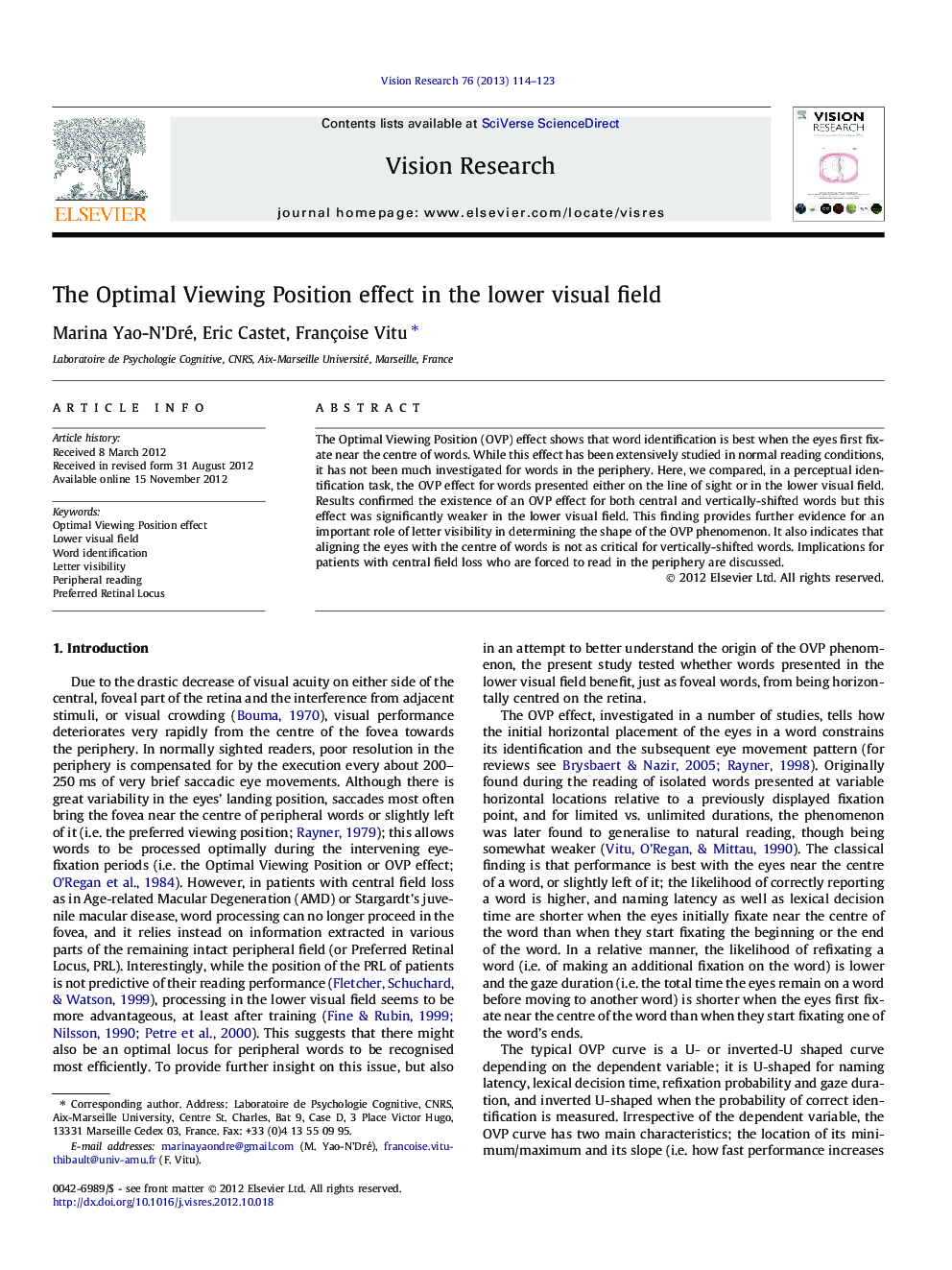| Article ID | Journal | Published Year | Pages | File Type |
|---|---|---|---|---|
| 6203644 | Vision Research | 2013 | 10 Pages |
The Optimal Viewing Position (OVP) effect shows that word identification is best when the eyes first fixate near the centre of words. While this effect has been extensively studied in normal reading conditions, it has not been much investigated for words in the periphery. Here, we compared, in a perceptual identification task, the OVP effect for words presented either on the line of sight or in the lower visual field. Results confirmed the existence of an OVP effect for both central and vertically-shifted words but this effect was significantly weaker in the lower visual field. This finding provides further evidence for an important role of letter visibility in determining the shape of the OVP phenomenon. It also indicates that aligning the eyes with the centre of words is not as critical for vertically-shifted words. Implications for patients with central field loss who are forced to read in the periphery are discussed.
⢠We tested the OVP effect for words presented in the lower visual field. ⢠The OVP effect generalises, though being weaker for vertically-shifted words. ⢠Aligning the eyes with the central letter of words is not as crucial in the periphery. ⢠Our results favour a letter-visibility account of the OVP phenomenon. ⢠Patients with central field loss may benefit from using a vertical PRL.
